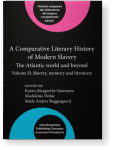Chapter 16
The cultural memory of Roma slavery in Europe
Aferim! (2015)
The public memory of the Atlantic slave trade and slavery began spreading in West Africa
after World War II, but in Europe and the Americas it has gained attention only in the last few decades.
Notwithstanding the fresh comparative, interdisciplinary approaches to slavery arguing for historical revision and
the imaginative possibilities of cultural memory, postmemory, and prosthetic memory, the history and memory of
Roma slavery in Europe are still marginalized subjects. This chapter compares the greatest slave system in modern
Europe to forms of Mediterranean and US slavery through a transatlantic approach to the history of Roma slavery in
Wallachia and Moldavia. A comparative perspective on the cultural memory of Roma slavery reveals the durable,
wide-ranging effects of institutionalized racism, as well as the resisting force of cultural postmemory products
such as Radu Jude’s 2015 film Aferim! in representing
the silenced history of Roma slavery and the role it played in producing a racialized ontology of Roma
‘blackness’.
Article outline
- The slavery of Roma in Wallachia and Moldavia (fourteenth-nineteenth centuries): Questions of memory, history, and racism
- Aferim! The cultural memory of Roma slavery and the working of race
- Author queries
-
Notes
-
References
This content is being prepared for publication; it may be subject to changes.
